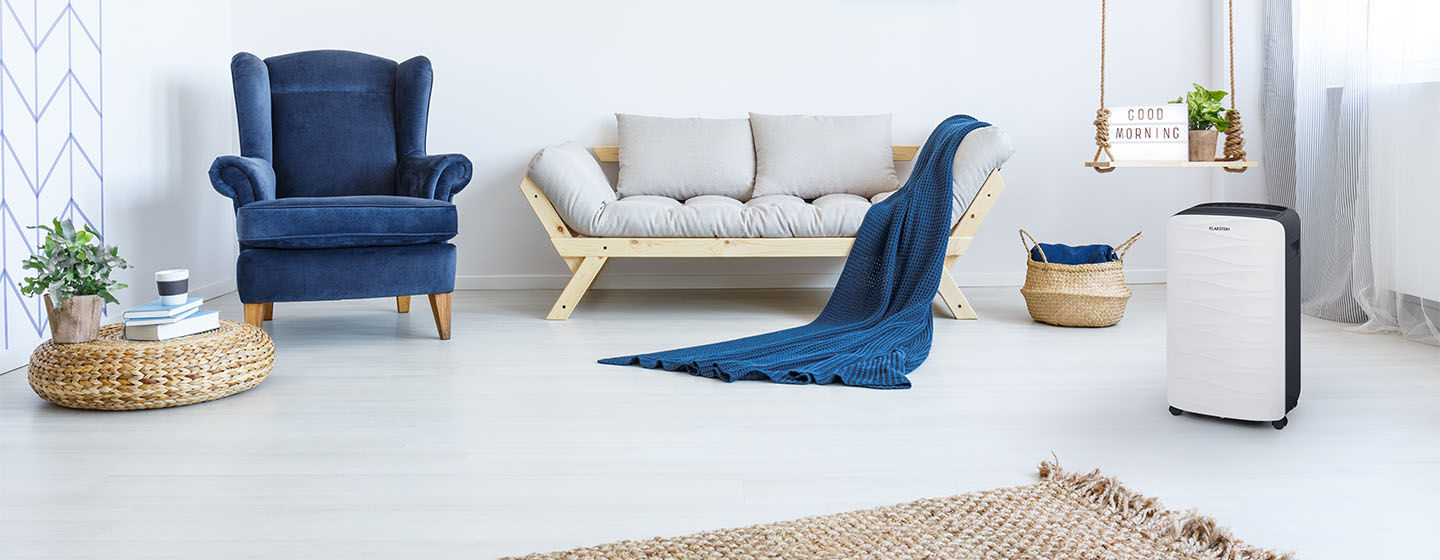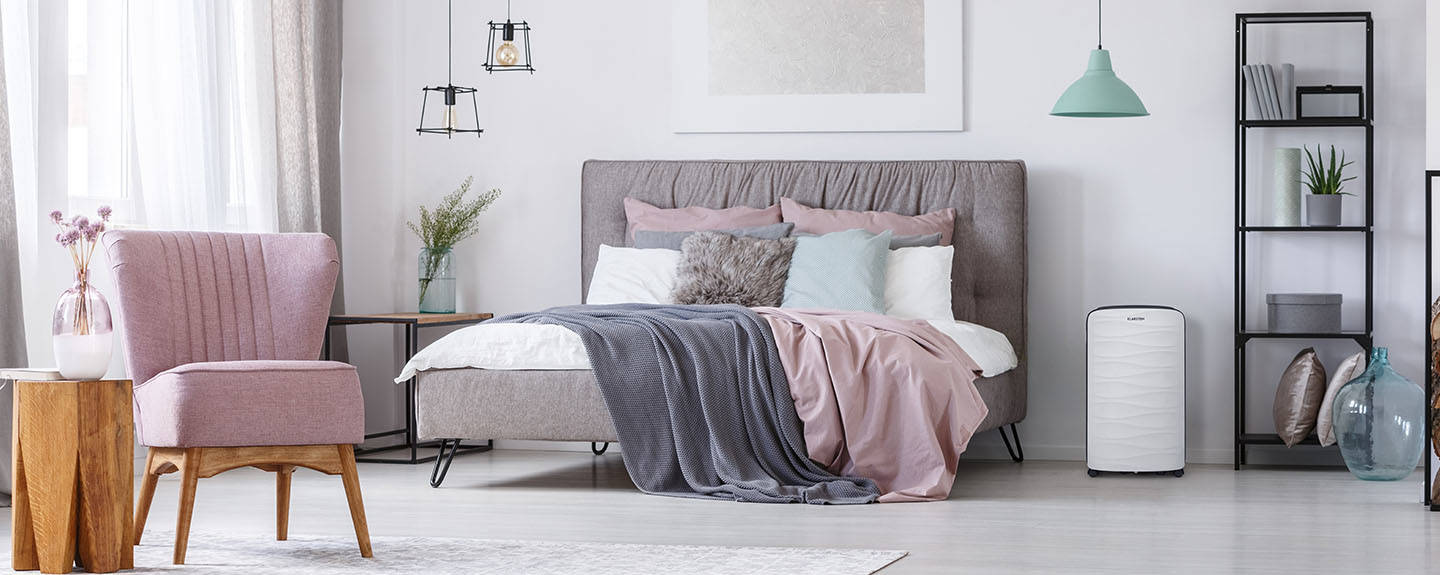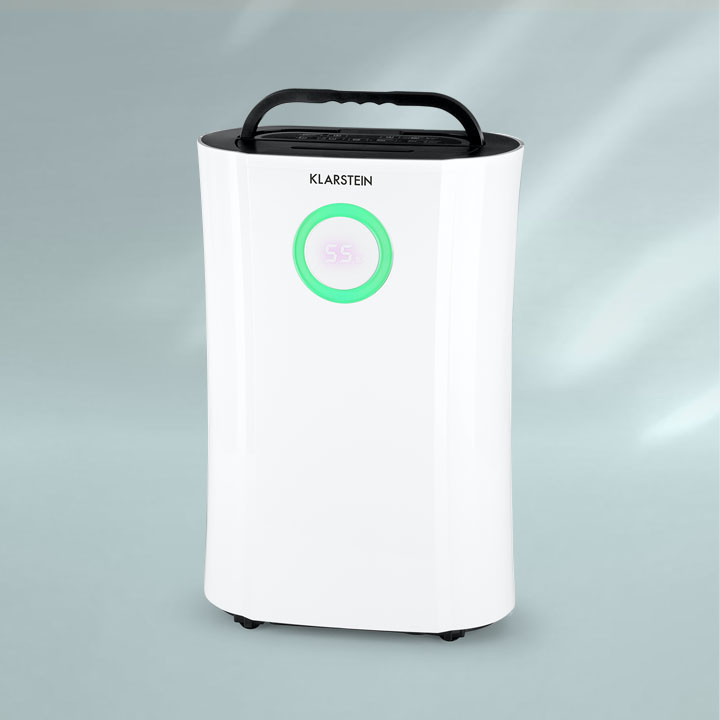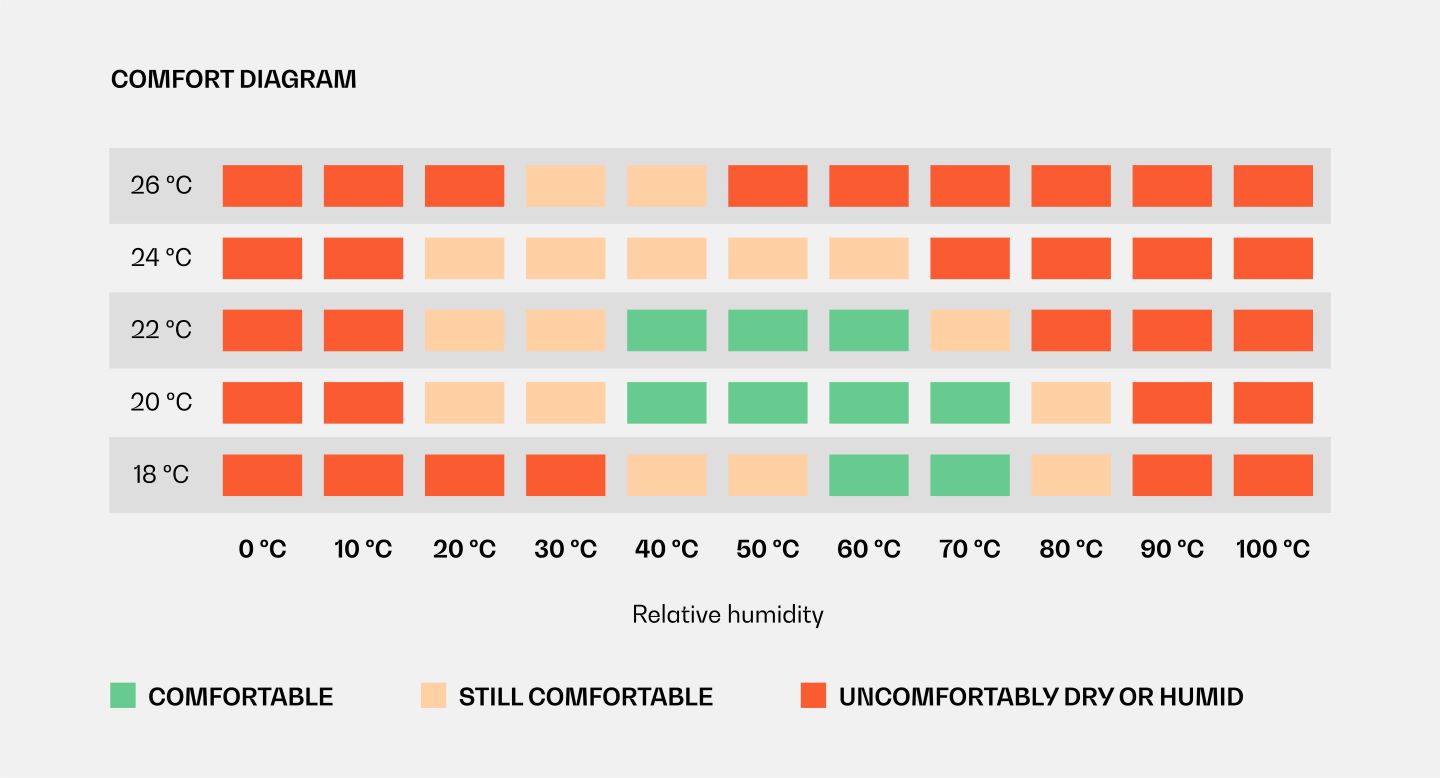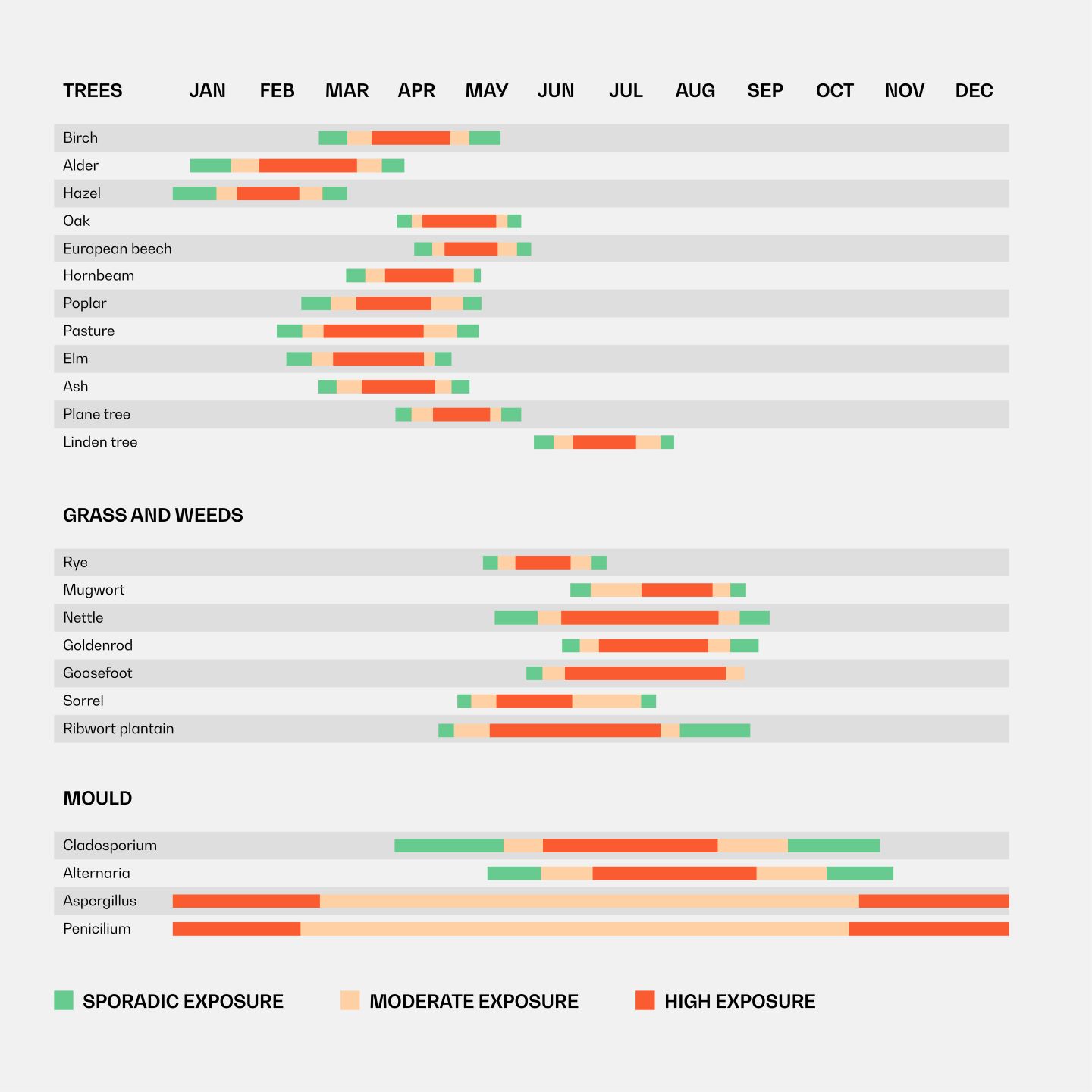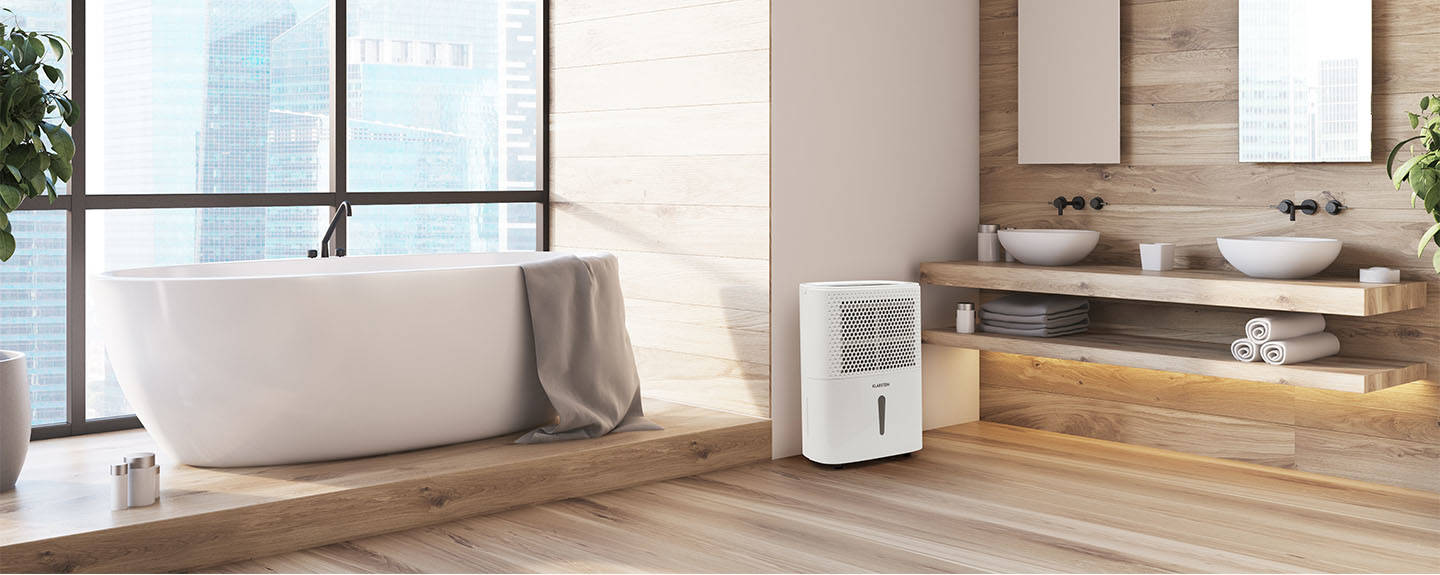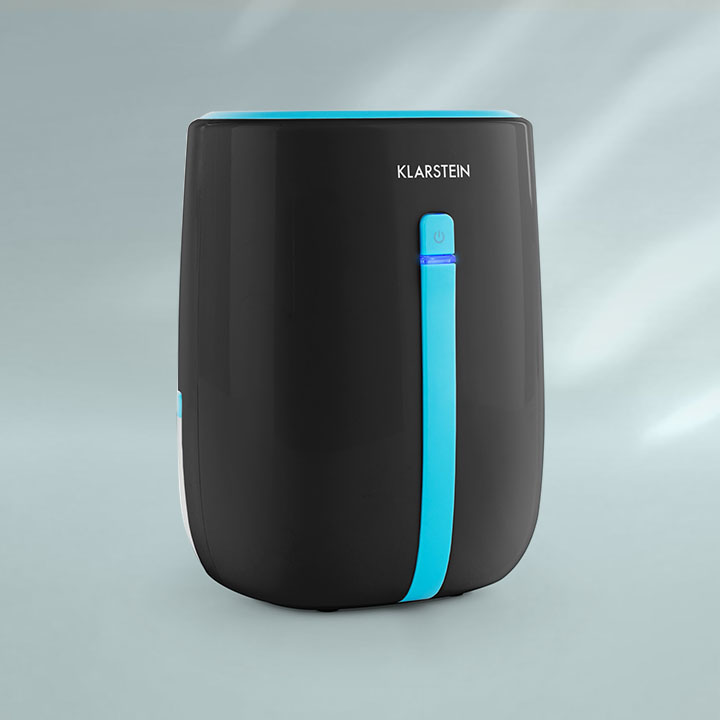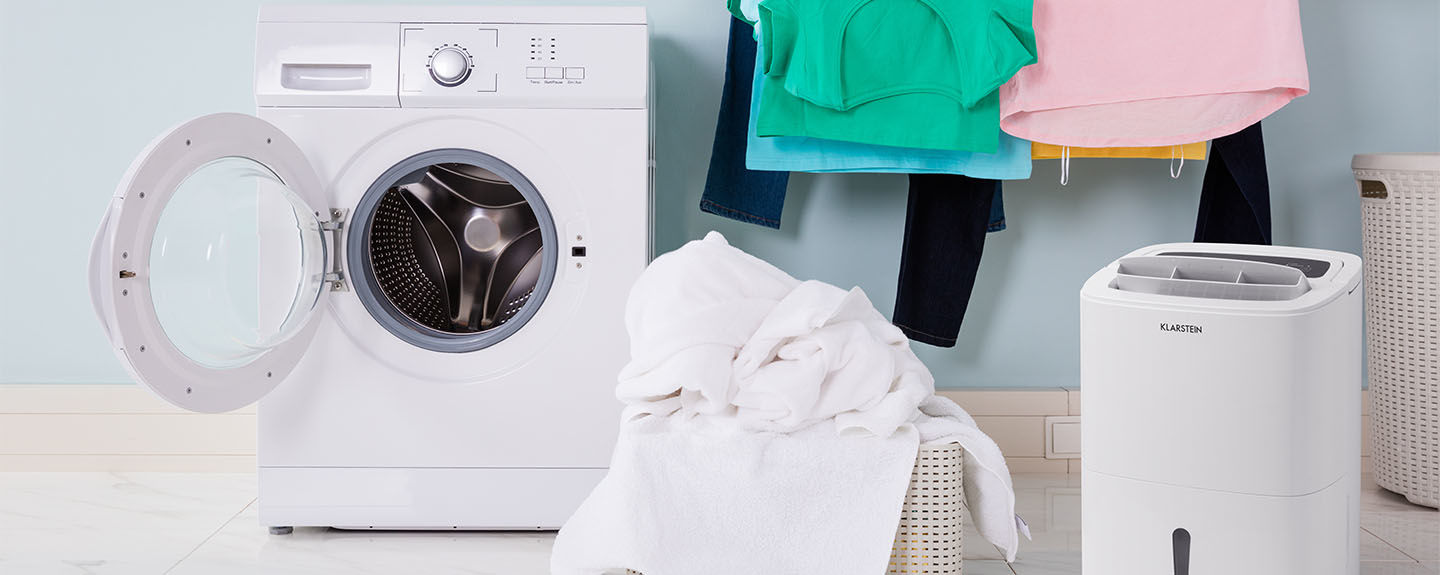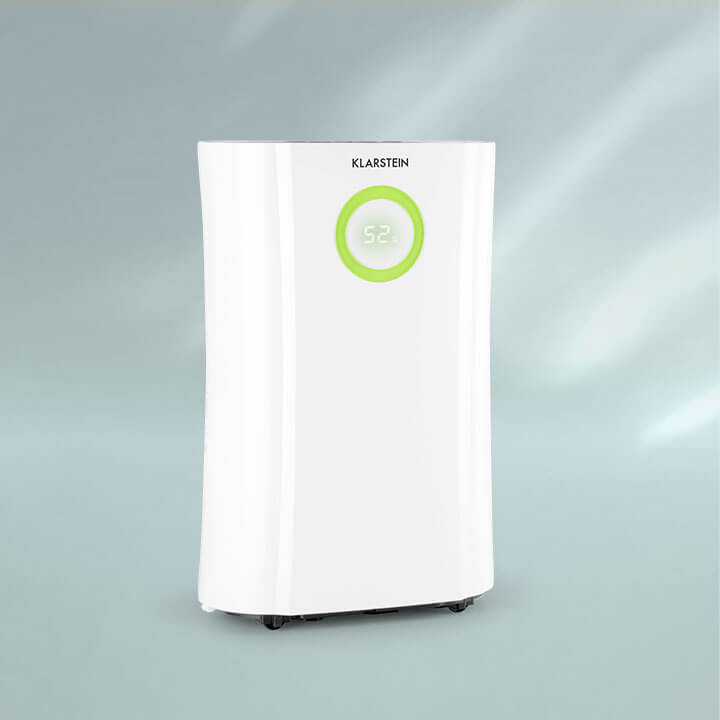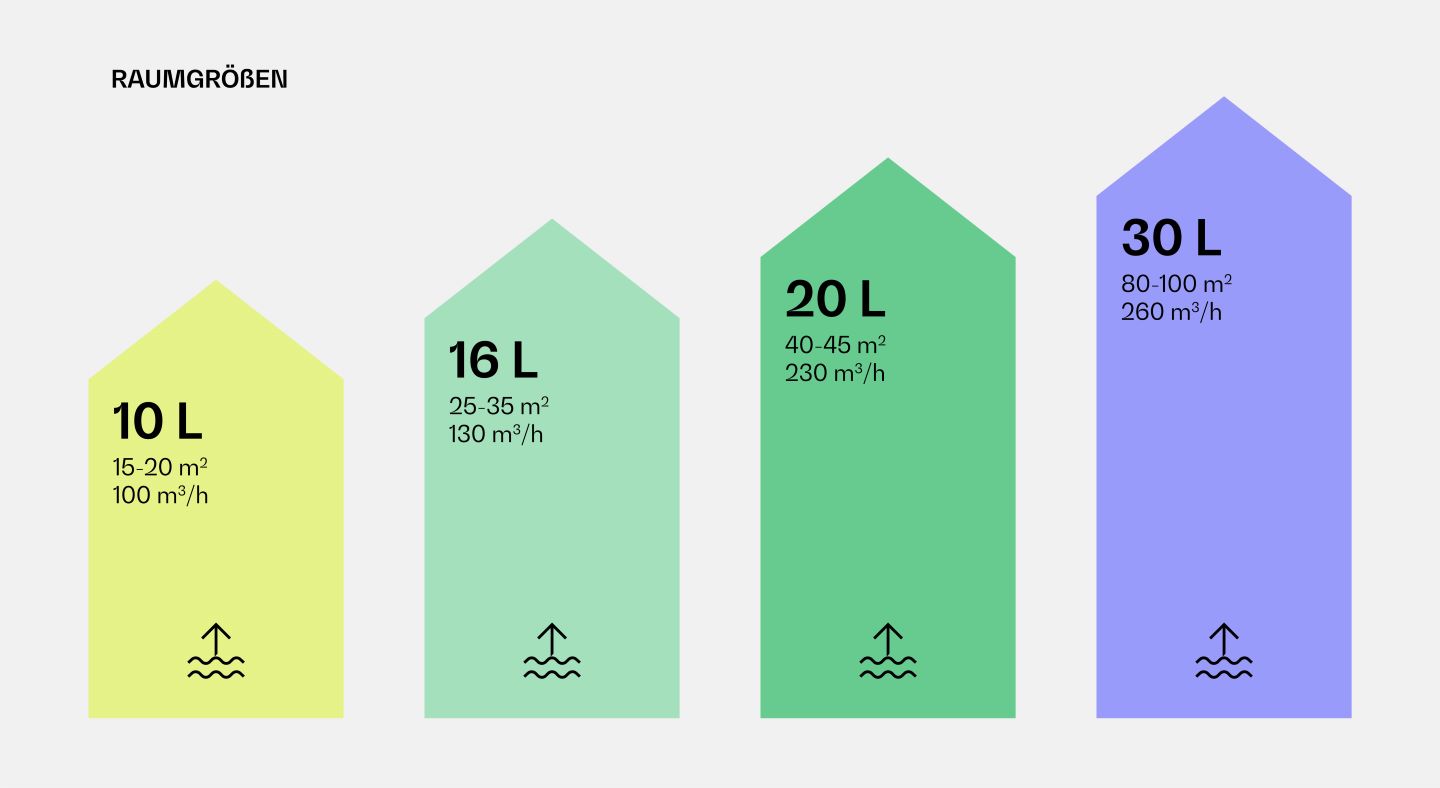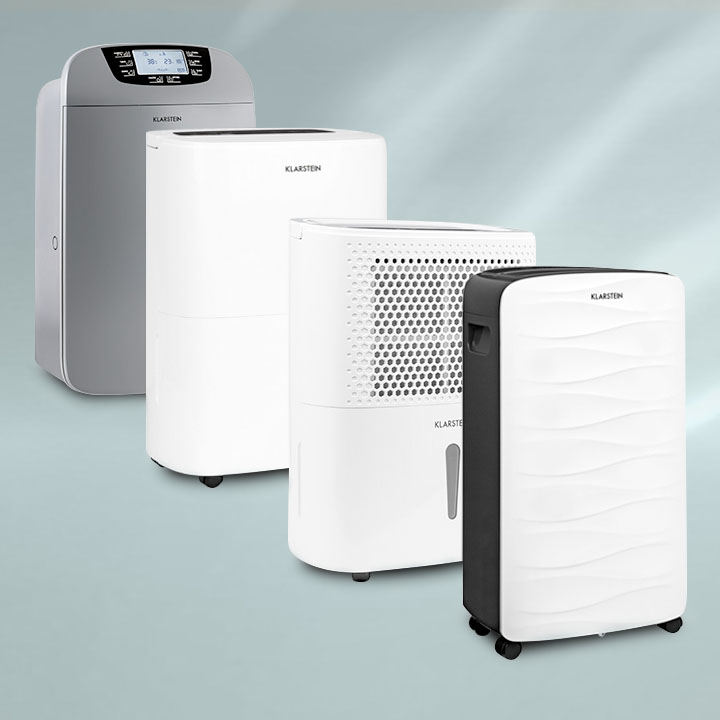The most important information for room air humidity at a glance
Electrical dehumidifiers are superior to their chemical partners in the long run for both price and performance. Therefore, electrical appliances are the best solution for anyone who wants healthy air, dry laundry and mould-free spaces. We recommend our DryFy series that impresses with practical features, high quality and stylish designs.
Why do I need a dehumidifying device?
Dehumidifiers optimise your sense of well-being and your quality of life considerably - from the body to the spirit to the home itself - and are advisable in different situations:
- Mould growth on the walls
- Unpleasant room climate
- Water damage
- Drying after new construction
- Damp walls
- Musty smell
- Rusting
Especially on cold winter days, when humid air flows from the outside inwards and down on the walls, favourable conditions for mould growth develop. Better to decide on a dehumidifier that gives you a pleasant and suitably dry home at all times as well as pure air.
Dehumidifier: electrical or chemical? Long live diversity
The widespread assumption that quickly ventilating rooms will solve moisture problems is unfortunately often wrong. When it is damper outside than in the home, the open windows bring even more moisture into the rooms. Here humidifiers come into the game - motivated and victorious. But which one should it be? We'll introduce you to the different types, explain their respective properties and clarify again why we have a clear favourite.
Electrical: adsorption dehumidifier versus condensation dehumidifier
Adsorption dehumidifiers work with dry means to escape the humidity. The resulting condensate does not end up in a container, but goes outside via a hose and an opening in the building. Such models are unsuitable for closed rooms.
Condensation dehumidifiers are the most popular electrical dehumidifiers. For good reason: they are easy to operate and impress with a strong price-performance ratio. Similarly to refrigerators, condensation dehumidifiers work with a coolant. The compressor sucks in cold air, which is condensed to water which then drips into a collecting container. In return, the device dispenses dry hot air. As a result, these are excellent for closed rooms such as bathrooms, kitchens and bedrooms.
Chemical dehumidifiers
In contrast to electrical dehumidifiers, the chemical variant uses a white granulate which withdraws the moisture from the air. This happens without energy supply as the chemical desiccation binds the moisture and then transports it as a liquid into a container - until the agent is used up. After that, you have to buy more granules. The disadvantages are clear: a generally low admission volume and a tendency for high running costs.
Dehumidifier: home dried, health supported
Whether bedroom, kitchen or bath - in many rooms, inevitably the humidity is too high. If traditional household remedies no longer suffice, a dehumidifier is necessary. But not all models are right for every room.
For rooms up to 20 m², dehumidifiers are suitable with a daily rate of around 10 litres. Or to express it in Klarstein words: DryFy 10, for example. For small bathrooms, in the unfavourable case even without a window, such models for regulating humidity are equally ideal as for the faster drying of towels and similar. When a laundry rack is placed in the bathroom, it is even more practical - then the evaporated water does not land unfiltered on the walls, but rather in the dehumidifier. This also affects drying rooms with windows and basically always applies if you want to dry your laundry faster.
For larger spaces of 80 to 100 m², we recommend devices with a dehumidification performance of up to 30 litres per day - this can be done by the DryFy 30, for example. In large rooms, the humidity should be approximately 50% for health reasons, and when it runs over to 65% it can already promote mould. In order to enjoy a dry room climate and clean air, air dehumidifiers are often the best way.
To sum up
Although there is a higher investment at the beginning with electrical dehumidifiers compared to chemical dehumidifiers, they are significantly more cost-effective and have a longer operational life. In addition to the health-promoting arguments and the increased well-being by fresh air, electrical dehumidifiers can be used in a versatile way and can be adjusted as needed.
Klarstein recommends the DryFy series, which filters all remaining doubts from your purchasing decision with its overall value and well-formed designs.


